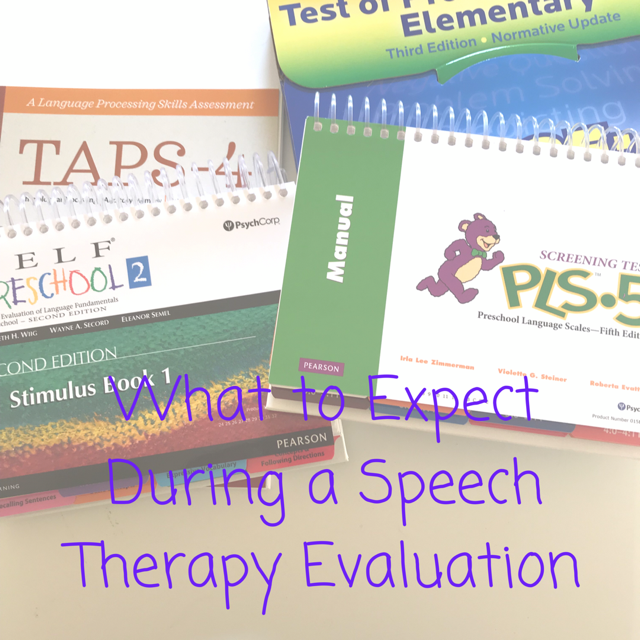Making the first move to schedule a speech-language evaluation is always a hurdle. However, scheduling an evaluation will answer many of your concerns about your child’s communication development. It will also allow you and the clinician to determine if there is a speech, language, or communication concern and, if needed, it will help you and the clinician develop a treatment plan. Whether you have or have not yet scheduled an evaluation it is important to understand what will happen so you can feel ready and more comfortable.
During a full speech and language evaluation the speech-language pathologist will analyze the child’s speech and phonology skills, oral motor skills, language understanding, language expression, voice and fluency skills, and social skills.
Before the speech-language therapy evaluation you will be asked to fill out paperwork. This paperwork could include administrative paperwork such as the office’s Policies and Procedures and HIPPA privacy notice. It should also include an initial case history form and possible surveys for the parents or schools to fill out. A case history will help give the clinician a picture of your child’s overall development. The case history allows the therapist to learn more about your child’s medical history, developmental history, communication concerns, school history, and therapy history.
A speech-language therapy evaluation may take an hour, multiple hours, or even multiple therapy sessions depending on the communication concerns, age, and cognitive level of your child. During the evaluation the speech-language pathologist will get to know your child and will analyze his/her overall speech and language strengths and weaknesses. This is done through parent interviews, and both formal testing and informal observations.
The child’s speech and language concerns will determine which formal speech-language standardized assessment(s) are administered. There are a variety of formal speech-language therapy standardized tests. Many of the tests have a book of picture stimuli and the therapist will have the child perform different speech and language tasks while looking at the pictures. The benefits of having formal standardized assessment results include: obtaining a scaled score, percentile rank, and age equivalent for the child. This allows the family, clinician, school, or insurance company to know exactly where his/her communication skills are compared to same age peers. However, how a child performs on a standardized assessment does not provide the clinician with a full picture of the child’s speech and language skills. Therefore, the clinician will also assess your child through observations.
The clinician does observations through interaction and play during the evaluation session. Information can also be gained if the clinician observes your child in the home or school. During the observation the clinician will look at the child’s overall communication and compare it to expected developmental milestones. Observations of your child will provide information about his/her strengths and weaknesses in a more natural communication exchange. It will also look at the child’s communication ability in situations the standardized test may not have addressed. Observations are also important if a child is not able to participate in formal standardized testing.
From the information obtained through the paperwork, parent interview, standardized testing, and observations you and the clinician will gain information to form a treatment plan and create functional therapy goals. This will lead your child towards communication success!

